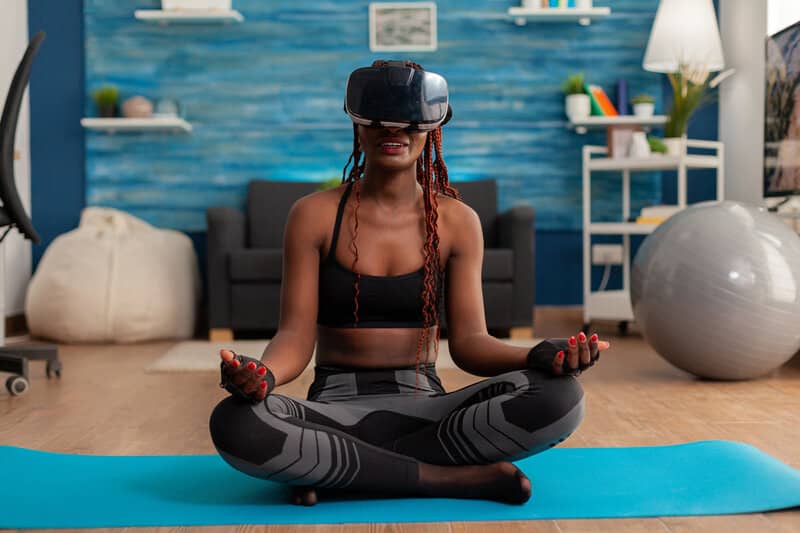Virtual reality and its application in fitness training

Discover how Virtual Reality (VR) is revolutionizing the fitness industry, creating immersive and effective training experiences that go beyond traditional workouts. This post delves into the intersection of VR and physical fitness, highlighting the innovative ways this technology is applied to enhance workout routines.
VR technology is not just for gaming; its applications in STEM education and fitness training are proving to be groundbreaking. By integrating VR into fitness, individuals gain access to personalized, engaging, and diverse training sessions that cater to a wide range of fitness goals.
Transforming Fitness Training with VR
Virtual Reality is taking the fitness world by storm, offering new and immersive ways to stay fit. Through virtual environments, individuals can engage in physical activities that are both enjoyable and challenging. This novel approach to fitness leverages the engaging aspects of video games, making workouts feel less like a chore and more like an adventure.
One of the key benefits of using VR in workouts is the ability to immerse oneself in a completely virtual environment, free from the distractions of the real world. This level of immersion is not only motivational but can also lead to better workout performance and consistency.
Moreover, VR fitness programs are highly adaptable, catering to a variety of fitness levels and preferences. Whether it’s yoga, strength training, or cardiovascular exercises, VR has something for everyone.
This adaptability extends to STEM education as well, where VR tools are used to provide hands-on learning experiences. Just like in fitness, these immersive experiences can enhance understanding and retention of complex concepts.
Enhancing Workout Motivation and Performance
The gamification of fitness through VR is a powerful motivator. By incorporating game-like elements into exercise routines, users are encouraged to reach new levels of physical performance. Achievements, scores, and virtual competitions add an element of fun, driving users to push their limits.
In addition to motivation, VR provides real-time feedback, allowing users to monitor their progress and adjust their workouts accordingly. This immediate feedback loop is critical for both maintaining correct form and preventing injuries.
VR also enables users to experience a wide range of activities that may not be accessible otherwise, such as climbing virtual mountains or cycling through exotic locations, further enhancing the workout experience.
Customized Training Programs
One of the standout features of VR fitness is the ability to create highly personalized workout regimens. Based on individual fitness goals, preferences, and data, VR applications can design customized training sessions that are both effective and engaging.
This personalization extends to STEM education, where VR can tailor learning experiences to the needs and interests of each student, making learning more relevant and exciting.
Furthermore, personalization in VR fitness helps to cater workouts specifically to the user’s current fitness level, reducing the risk of injury and ensuring steady progress.
Overcoming the Challenges of VR in Fitness
While the integration of VR into fitness training offers numerous benefits, there are challenges to overcome. These include the need for accessible and affordable VR equipment and ensuring users have sufficient space to move safely.
Developers are continuously working on making VR fitness more inclusive by reducing the cost of VR headsets and developing more compact and efficient equipment.
As VR becomes more mainstream in fitness, it’s likely these challenges will diminish, making VR workouts accessible to a wider audience.
The Future of Fitness is Here
As VR technology continues to evolve, its application in fitness and STEM education is bound to expand. These advancements promise even more immersive, effective, and personalized fitness experiences.
The integration of VR into fitness is just beginning. With its ability to transform tedious workouts into engaging adventures, it’s clear that virtual reality holds a significant place in the future of physical training.
STEM Education and VR Fitness: A Synergistic Relationship
The synergy between STEM education and VR in fitness highlights the versatility and impact of VR technology. Just as VR offers hands-on, immersive experiences for learning complex STEM concepts, it provides similarly immersive environments for fitness, making exercise more engaging and insightful.
By fostering an interest in STEM through virtual reality applications in fitness, individuals can gain not only a healthier lifestyle but also valuable knowledge and skills applicable in a tech-driven world.
In conclusion, the integration of Virtual Reality into fitness training is not just transforming workouts into more engaging and effective experiences but is also enhancing the way we approach STEM education. As this technology continues to evolve and become more accessible, its applications in physical fitness and education will likely become even more profound, benefiting individuals worldwide.

Related